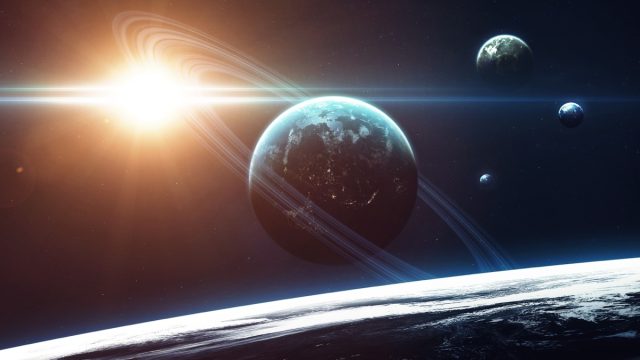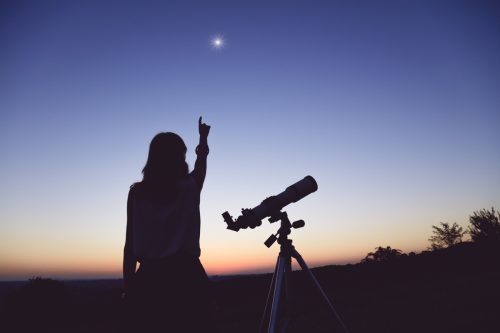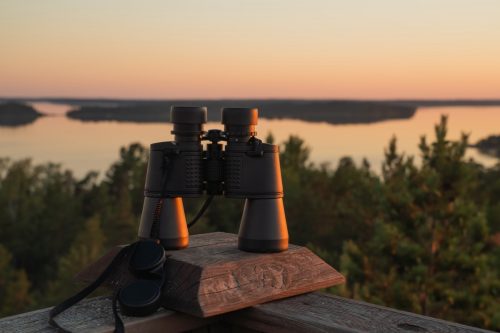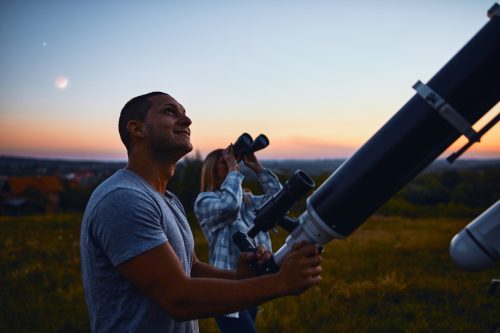You Can See 5 Planets Align in the Sky Tomorrow—Here’s How

Even if you’re not an astronomy lover, you have to admit, it’s pretty cool to see unexpected phenomena in the night sky. Maybe you’ve caught a glimpse of a shooting star or even a supernova at one point. But early tomorrow morning, you can take some initiative and add another spectacular sight to your list. If you’re willing to jumpstart your Saturday, you’ll be able to see five planets align in the sky. Read on to find out how you can get the best view.
READ THIS NEXT: 6 Stargazing Secrets, According to Astronomy Experts.
Don’t miss this cosmic curiosity.

According to Forbes, Saturn, Neptune, Jupiter, Uranus, and Mercury will be visible early tomorrow morning. The five planets are set to align in the Eastern sky around 5 a.m., before the sun comes up in your area. The planets rise in that order, per NewScientist, with Mercury at the lowest point and Saturn at the highest in the sky.
All of the planets orbit around us at different speeds and on different planes, meaning they’re never perfectly aligned in space, according to app development company Star Walk. However, when they are gathered close together on one side of the sun at the same time, it creates the aligned view we see from Earth.
Binoculars will help you get the full experience.

In general, you should seek out a viewing spot with low light pollution and a view of the horizon, per the Associated Press. Saturn and Jupiter will be visible to the naked eye, but to see Neptune and Uranus, Don Pollacco, exoplanet expert in the Department of Physics at the University of Warwick in the UK, recommends grabbing binoculars.
“Neptune and Uranus need binoculars to be sure of seeing them, although some keen-sighted people can see Uranus unaided,” Pollacco told Forbes.
Mercury, which is dimmer and the last planet to rise, is a bit trickier to spot. Get to the second or third floor of a building and face toward the east, Forbes suggests. You’ll also want to know the precise time that Mercury will rise, which depends on where you live. To check, you can download a stargazing app or use the online map powered by Stellarium.
RELATED: For more up-to-date information, sign up for our daily newsletter.
Pollacco says that the planets have different hues to help you spot them.

When in doubt, you can also try to identify the planets by color, according to Pollaco.
“Jupiter and Saturn will be bright objects that have a yellowy colour, Mercury often looks pink, and Uranus and Neptune pale white/green,” he told Forbes.
If you prefer to sleep in, you can catch an evening alignment next month.

If you sleep through your alarm, don’t fret. According to Star Walk, while June 17 is the best day to see all five planets, in some parts of the world, you may be able to see the alignment for the next few days. Even better, on July 22, there will be a “mini evening alignment of Mars, Venus, and Mercury.”
After that, the next planetary alignment won’t occur until April 20, 2024, when Venus, Mercury, Neptune, Mars, and Saturn will be visible in the morning. The next full alignment, meaning all seven planets in view at the same time, will occur on Feb. 28, 2025.